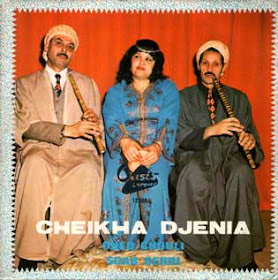Freemuse's Daniel Brown (son of Kenneth Brown, editor of Mediterraneans/Méditerranéennes) interviewed Mohemed Messoudi, the lawyer of imprisoned Moroccan rapper El Haqed, on May 27 and a member of the Administrative Committee of the Moroccan Association for Human Rights. Here is some of what we learn:
Did El Haqed recently compose and release songs that could have angered the authorities?
“He has just released an album called Walou which means ‘Nothing’ (nothing has changed in the fields of justice, education, democracy, there is too much corruption and we are living under a dictatorship, with torture, etc…). The presentation (sic) of the album has already been banned by the Moroccan authorities. There has also been several of Haqed’s concerts that have been vetoed.”
How would you describe the current situation for musicians in Morocco?
“It’s simple: If you sing for the governors and the statesmen you are given the support that you need – money, publicity and the possibility of performing at festivals and on stage. You can even be decorated. If you take the opposite stance and dare criticise the current political, economic and social situation in the country, you run the risk of going to prison and you are banned from playing or appearing in any (official) media.”
....
...can this album [Walou] can be found in stores?
“No, you can not find this album in stores in Morocco, as Haqed criticizes the Moroccan political system, no distributor agrees to cooperate with him, the only option is direct sale to people who are interested in his music and also via social networks facebook youtube, and so on, and yes, there were sales using its own means.”
NOTE: go here, on Youtube, for the song "Walou," and it will lead you to all the other songs on the album. Nearly 71,000 views of the song. Let's bump those numbers up!]
...
What is the popularity of El Haqed?
“Considering he is banned by all media and official festivals because of his activism and political positions, EL Haqed finds his popularity via social media. His songs are listened to by thousands of people on Youtube. His first arrest was adopted by Amnesty International and several international and national human rights associations.”
....
What are the political views of Haqed?
“He criticizes the corruption, which reigns the political, economic and social life. Considering his reputation and sincerity to the Moroccan people – his voice and his songs disturb authorities more and more.”
*******
Here is a link to a petition to sign in support of El Haqed.
When the interview was done El Haqed was scheduled to appear before the court for a hearing on May 29. Facebook connections now say that it has been rescheduled for June 6. [Update, a few minutes after the original post: Mark Levine notes that the postponement means that El Haqed conveniently will be kept out of public view until the Mawazine festival (see below) is almost over.}
At his first court hearing (he was arrested May 18) he is reported to have said to the judge "Prison won't make me cry. I am free wherever I am. What makes me weep is the plight of the [Moroccan] people."
Meanwhile, international artists like Justin Timberlake, Ne-Yo, Alicia Keys, IAM and Robert Plant are appearing at Mawazine, the state-sponsored festival in Rabat, from May 30 to June 7. There has been a campaign to get at least some of these artists to at least say something in solidarity with El Haqed, but to date I've heard nothing of such a response. If it were Russia and Pussy Riot, of course, there would be a big international fuss. But even the most progressive artists (seriously, IAM!) seem to think that the makhzen is "moderate" and so shouldn't be criticized. The not so progressive I guess are just happy to get the pay check.
It is not of course El Haqed who is the target of state repression. According to this report from ABC on May 29,
Morocco's most prominent independent rights group, the Moroccan
Association for Human Rights, has been sounding the alarm since March,
saying that many of its young activists around the country face police
intimidation.
My previous post on El Haqed, with details on his arrest, is here.































